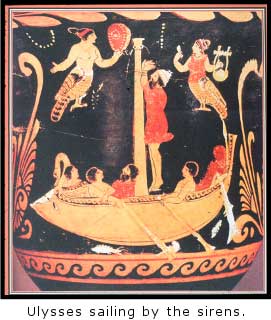
Introduction. The First Argonauts is the name in shorthand that is given to the study of early island archaeology and the origins of seafaring in the Mediterranean Sea. There are three main questions that we would like to ask. First, how far back in time can the archaeologist trace the earliest evidence for voyaging to islands in the Mediterranean? Second, which islands provide the oldest evidence for seafaring and what sorts of things are recovered from excavations at early sites on them? Third, what were environmental conditions like in the time when the earliest voyages were made? One of the reasons for creating this web site is a practical one: the organization of the meeting on “Island Archaeology and the Origins of Seafaring in the Eastern Mediterranean” which was held at Reggio Calabria in October of 2012. This was one of the Workshops that the Wenner Gren Foundation supports each year. The goal this meeting was to encourage the exchange of ideas between scholars (normally a small group of 16-18 participants), who are actively working in a new and rapidly developing field of study in Anthropology and Archaeology. At the same time, the web site has a broader purpose -- to make information on the subject accessible to a wider audience and to serve as a forum for discussion.
 The Argonauts. In Greek mythology, the Argo is the name of the marvelous long ship that was built for Jason with the aid of Athena. Under his leadership, the other great heroes of the day joined Jason in his quest for the fleece of a golden ram. To make a long story short, the Argonauts embarked on a long voyage and engaged in a whole series of adventures along the way. The tradition of seeing the Argo as the first ship goes back to Euripides, an Athenian playwright who wrote in the fifth century BCE. Such a fanciful account of how seafaring began is, of course, too grand and too shortsighted. In its place, what we now know, on the basis of archaeological evidence, is that the first Argonauts, using small boats, were able to set out on voyages to an offshore island such as Cyprus some 12,000 years ago -- a time far earlier than anyone living in ancient Greece or Rome ever imagined.
The Argonauts. In Greek mythology, the Argo is the name of the marvelous long ship that was built for Jason with the aid of Athena. Under his leadership, the other great heroes of the day joined Jason in his quest for the fleece of a golden ram. To make a long story short, the Argonauts embarked on a long voyage and engaged in a whole series of adventures along the way. The tradition of seeing the Argo as the first ship goes back to Euripides, an Athenian playwright who wrote in the fifth century BCE. Such a fanciful account of how seafaring began is, of course, too grand and too shortsighted. In its place, what we now know, on the basis of archaeological evidence, is that the first Argonauts, using small boats, were able to set out on voyages to an offshore island such as Cyprus some 12,000 years ago -- a time far earlier than anyone living in ancient Greece or Rome ever imagined.

 Missing the Boat. There is also the realization today that the study of the earliest seafaring in the Mediterranean somehow managed to get off on the wrong foot in the twentieth century. In short, the archaeologist brought a Neolithic agenda to the question. There was a preoccupation with the pathway leading to the origins of agriculture and, in turn, to the spread of early farming. Given such a mind-set, the archaeologist invariably linked the origins of seafaring with the Neolithic period and the colonization of islands. During the last eight years, a completely different picture has emerged from the archaeological fieldwork carried out on several different islands. Thus, it is now time to uncouple the first seafaring in the Mediterranean from both of these notions. What we have recently learned is that voyaging in the eastern Mediterranean goes back to an earlier time -- to the world of coastal foraging at the end of the last ice age. Indeed, it is entirely possible that studies in progress may take the history of early seagoing back even further in time.
Missing the Boat. There is also the realization today that the study of the earliest seafaring in the Mediterranean somehow managed to get off on the wrong foot in the twentieth century. In short, the archaeologist brought a Neolithic agenda to the question. There was a preoccupation with the pathway leading to the origins of agriculture and, in turn, to the spread of early farming. Given such a mind-set, the archaeologist invariably linked the origins of seafaring with the Neolithic period and the colonization of islands. During the last eight years, a completely different picture has emerged from the archaeological fieldwork carried out on several different islands. Thus, it is now time to uncouple the first seafaring in the Mediterranean from both of these notions. What we have recently learned is that voyaging in the eastern Mediterranean goes back to an earlier time -- to the world of coastal foraging at the end of the last ice age. Indeed, it is entirely possible that studies in progress may take the history of early seagoing back even further in time.
Placing  Early Voyaging in Environmental Context. We are in many ways just at the start of taking the first steps towards the study of the earliest seafaring in the Mediterranean. Much work remains to be done when it comes to the discovery and the excavation of the sites of coastal foragers. Moreover, there are added complications that we have to keep in mind: the changes in climate and sea level that were taking place during the span of time between 14,000 and 8,000 years ago. In the literature, there is, for example, the working hypothesis that the cold snap known as the Younger Dryas (circa 12,800 to 11,600 years ago) was the catalyst to the advent of seagoing on a regular basis in the eastern Mediterranean. On the other hand, many of the coastal sites dating to this arc of time now find themselves in a submerged position due to sea-level rise. One of the challenges then is that the study of the campsites of coastal foragers may call for underwater archaeology.
Early Voyaging in Environmental Context. We are in many ways just at the start of taking the first steps towards the study of the earliest seafaring in the Mediterranean. Much work remains to be done when it comes to the discovery and the excavation of the sites of coastal foragers. Moreover, there are added complications that we have to keep in mind: the changes in climate and sea level that were taking place during the span of time between 14,000 and 8,000 years ago. In the literature, there is, for example, the working hypothesis that the cold snap known as the Younger Dryas (circa 12,800 to 11,600 years ago) was the catalyst to the advent of seagoing on a regular basis in the eastern Mediterranean. On the other hand, many of the coastal sites dating to this arc of time now find themselves in a submerged position due to sea-level rise. One of the challenges then is that the study of the campsites of coastal foragers may call for underwater archaeology.

